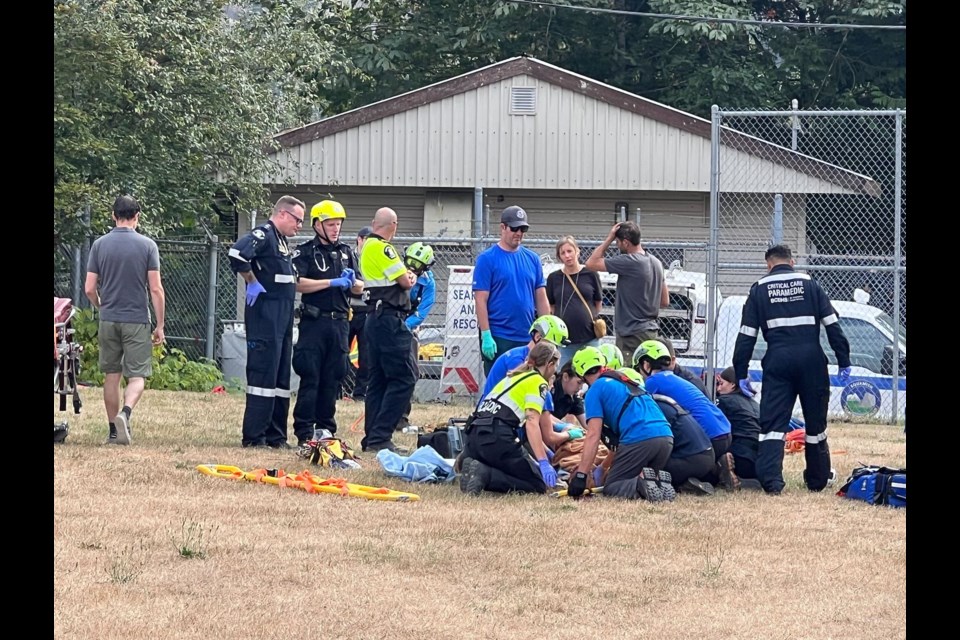With the heatwave finally breaking, outdoor enthusiasts are venturing further away from the beaten path—but Squamish SAR are reminding people that standard rescues take time, and remote rescues take even longer.
“More and more people are accessing remote terrain that is further away from help,” Squamish SAR spokesperson Christy Allan told The С����Ƶ.
“A reminder that it is getting darker earlier and the weather is getting colder. People need to be prepared to the point of providing primary care and self rescue.
“If a rescue is required, it takes time.”
On Thursday, Aug. 15, two climbers had to be rescued via a “highly technical long line operation” off the Bulletheads, a climbing route on the Stawamus Chief.
There were 20 volunteer members involved in the rescue as well as a pair of local climbers who came to assist the injured duo while waiting to be evacuated.
“We responded along with Squamish Fire Rescue and С����Ƶ Ambulance. With the assistance of two local guides the patients were assessed and stabilized,” Allan said.
“SAR executed a highly technical long line operation and evacuated the patients to the staging area where they were turned over to С����Ƶ Ambulance for further care.”
The rescue began around 1 p.m. and took over four hours to complete.
“Technical rescues like this one take a significant amount of time. We have to consider rescuer, patient and and public safety,” Allan said.
On Aug. 13 an elderly man had to be rescued from the Watersprite Lake trail on a stretcher after he took a tumble and was “unable to walk out on his own”.
“All hands (were) on deck for a long and arduous stretcher carry into the night,” reads the Squamish SAR instagram post about that rescue.
“A team of 20 members responded to the scene and began the five kilometre carry over rocks, roots and narrow water crossings, which took around three hours.
“Before helicopters were available, this is how rescues were done. It really takes a group effort to carry out these kinds of rescues.”
Allan says the rescue was completed by foot because a “low cloud cover” prevented a helicopter from accessing the location.
How to be a good bystander
Squamish SAR and RCMP both say the best way to be a helpful bystander when witnessing an incident is to call 911.
“Please [also] help our team members by clearing the area if you see operations underway,” Allan said.
Squamish RCMP spokesperson Cpl. Brett Urano told The С����Ƶ that bystanders should only “render aid to your own abilities”.
He encouraged bystanders to give injured patients comfort and to only help with the skills they confidently have—otherwise, it could lead to more trouble for everybody involved.
“We would like to thank the public and all the first responders for their efforts in helping the injured climbers,” Urano said.
For tips and tricks when planning your outdoor adventures, check out the




